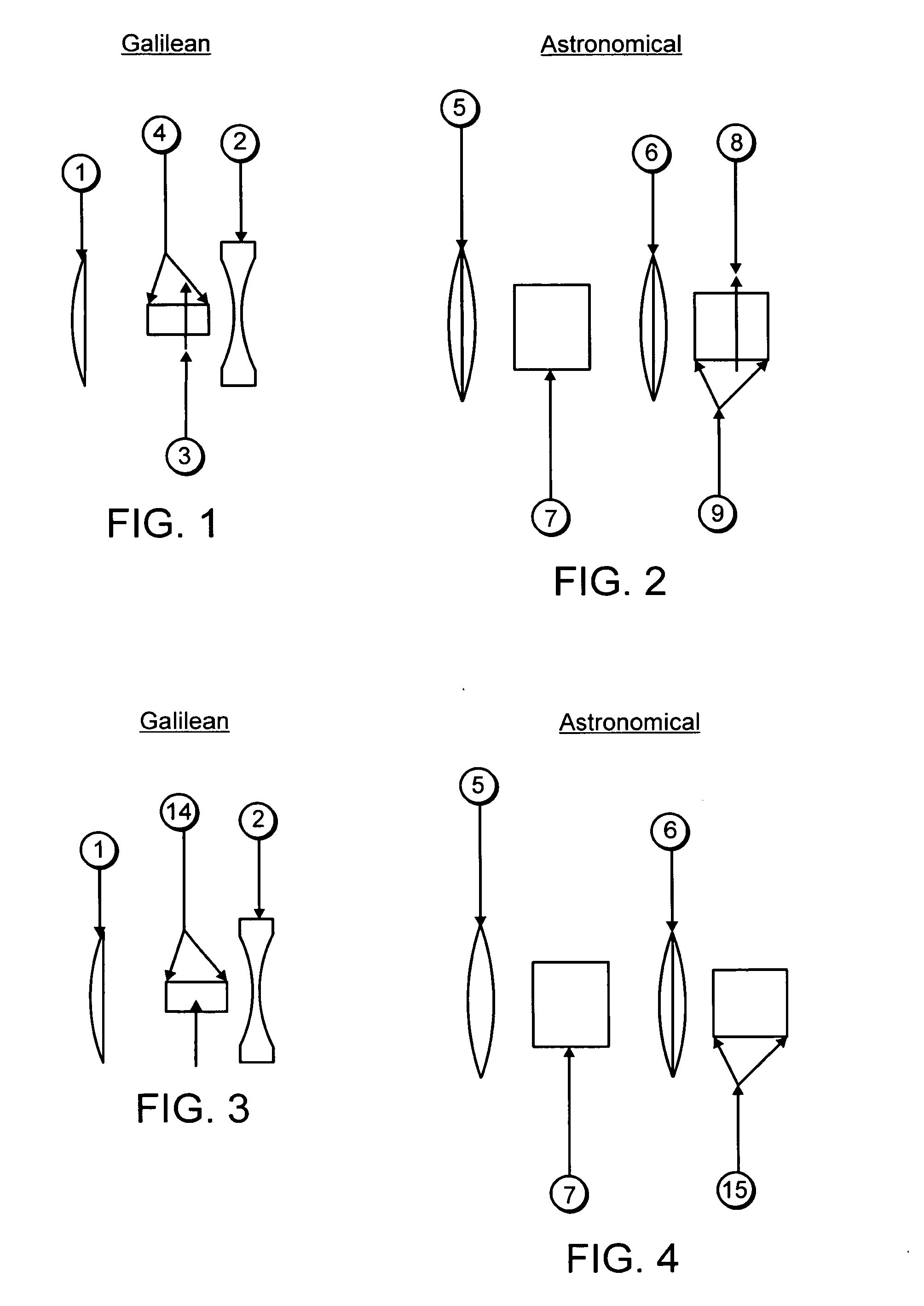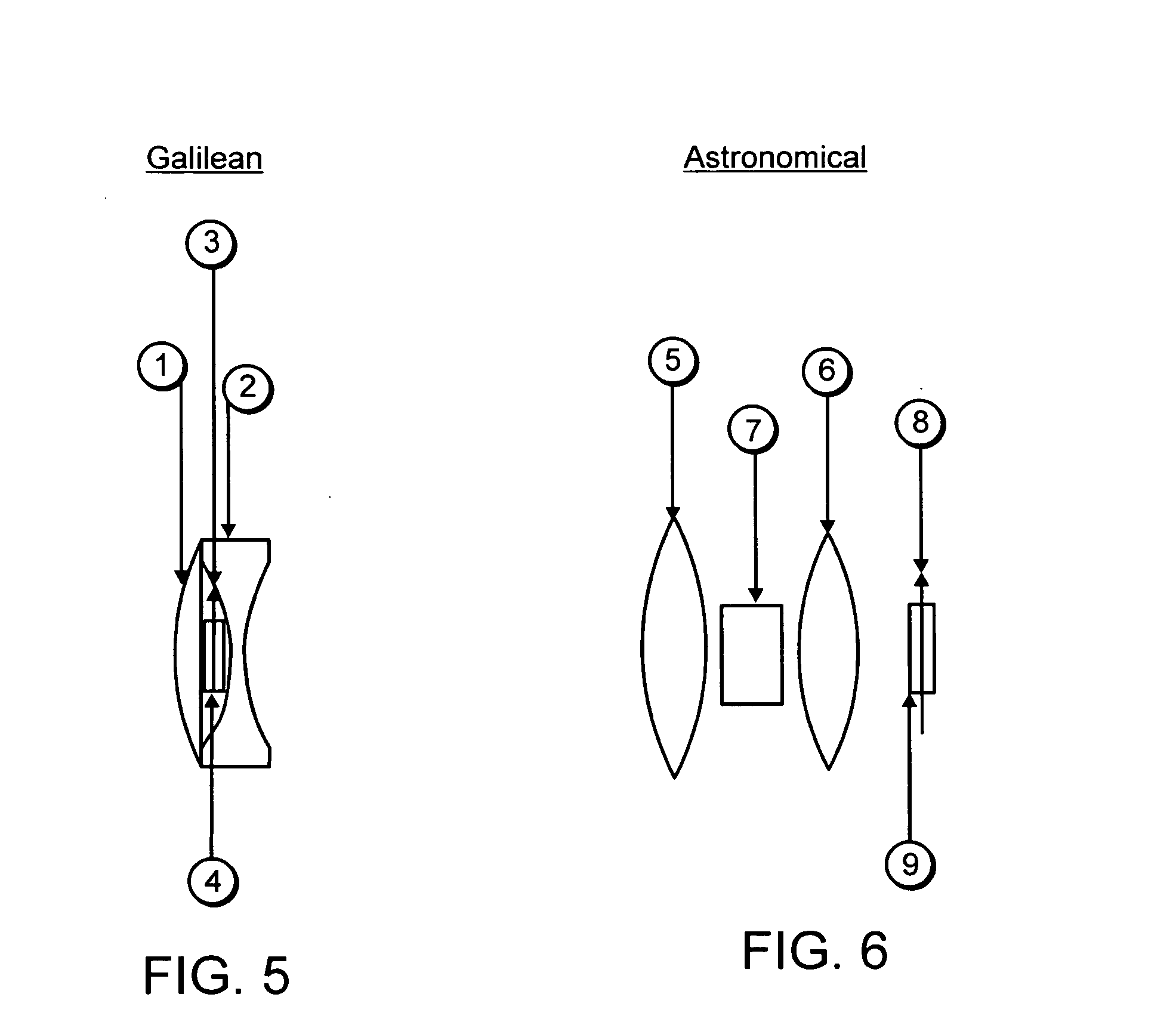Telescopes for simultaneous clear viewing of objects and areas both near and distant
a technology of objects and telescopes, applied in the field of telescopes for simultaneous clear viewing of objects and areas near and distant, can solve the problems of peripheral absence of spherical and chromatic aberration, and achieve the effects of eliminating peripheral distortion, enhancing luminosity, and maximizing eye lens accommodation ability
- Summary
- Abstract
- Description
- Claims
- Application Information
AI Technical Summary
Benefits of technology
Problems solved by technology
Method used
Image
Examples
Embodiment Construction
[0027] A description of preferred embodiments of this invention follows.
Definitions:
[0028] Accommodation is the eye's ability to bring into focus on the retina objects at varying distances from the eye. The reshaping of the eye's crystalline lens is governed by tiny ligaments and muscles which control accommodation.
[0029] Emmotropia occurs when the crystalline lens of the eye is completely relaxed, and the eye system, including the actual length of the eye globe, are such that images of distant objects are brought to a clear focus on the retina of the eye simultaneously.
[0030] Ametropia is the condition that prevents clear focusing of the distant objects on the retina. Inappropriate eye globe lengths, hardening or inflexibility of the crystalline lens, or non-spherical shaping of the cornea are known causes.
[0031] Myopia is commonly known as short sightedness and occurs when light from a distant object is brought to focus not on, but in front of the retina.
[0032] Hypreopia is...
PUM
 Login to View More
Login to View More Abstract
Description
Claims
Application Information
 Login to View More
Login to View More - R&D
- Intellectual Property
- Life Sciences
- Materials
- Tech Scout
- Unparalleled Data Quality
- Higher Quality Content
- 60% Fewer Hallucinations
Browse by: Latest US Patents, China's latest patents, Technical Efficacy Thesaurus, Application Domain, Technology Topic, Popular Technical Reports.
© 2025 PatSnap. All rights reserved.Legal|Privacy policy|Modern Slavery Act Transparency Statement|Sitemap|About US| Contact US: help@patsnap.com



